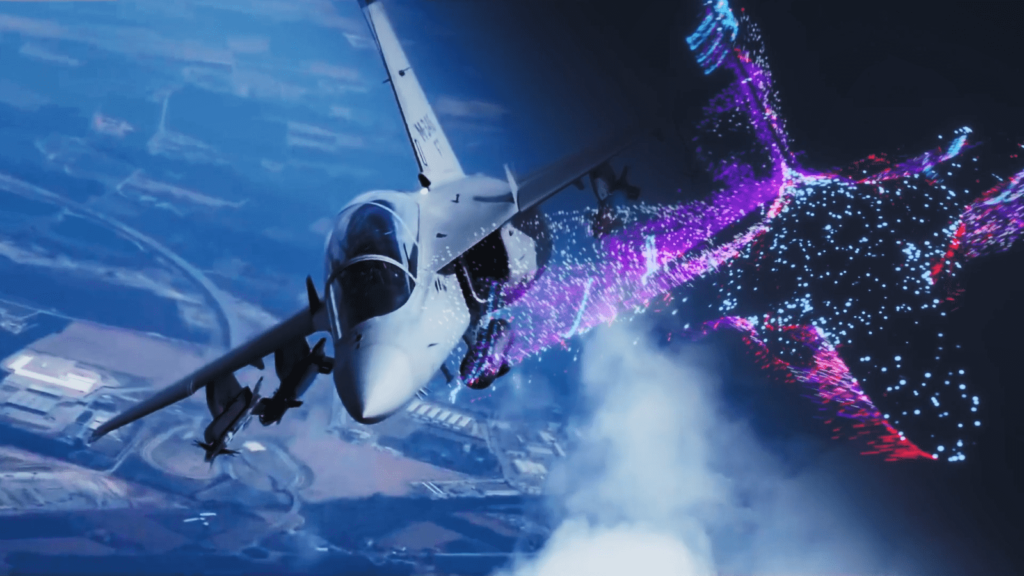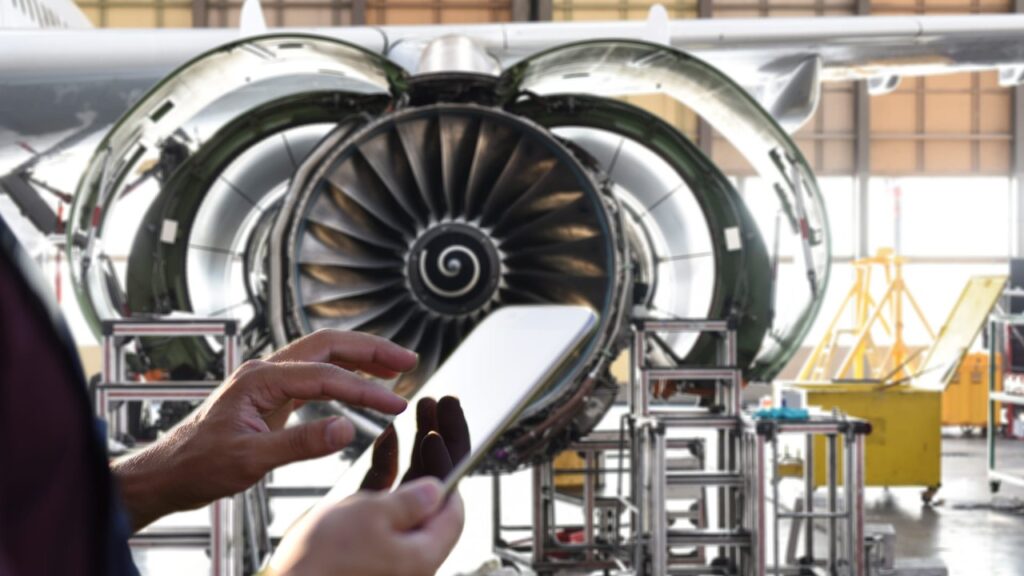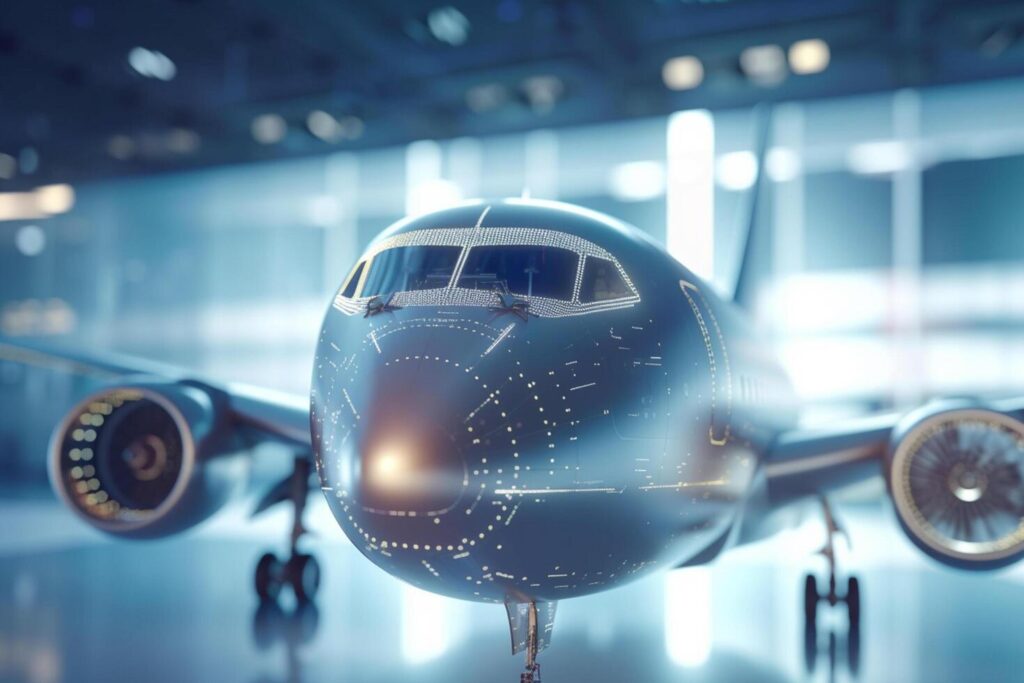
1. The Future of Aircraft Design and Technology
Today’s aircraft designs are advancing rapidly, leading to planes that are safer, faster, and more environmentally friendly. These improvements come from enhanced fuel efficiency and the integration of artificial intelligence (AI) into aircraft systems.
In this post, we’ll take a closer look at the cutting-edge innovations driving the aviation industry and explore career opportunities for those interested in designing the aircraft of tomorrow.
2. Fuel Efficiency Improvements in Aircraft
One of the main priorities for the aviation industry is to reduce fuel consumption, which lowers costs and benefits the environment. Here are some key advancements:
- Engine improvements: Modern turbofan engines are boosting fuel efficiency by up to 25%, and further improvements are expected in the coming decades.
- Aerodynamic designs: Aircraft manufacturers continue to refine wing and body shapes, allowing planes to reduce drag and fly more efficiently.
- Lightweight materials: Using lighter materials like carbon fiber helps reduce the weight of aircraft, leading to greater fuel efficiency, especially in commercial aircraft.
3. New Aircraft Configurations
New and experimental aircraft configurations are being developed to improve efficiency, reduce emissions, and offer better performance.
- Blended wing body: This innovative design merges the aircraft’s wings and body into one surface, creating a more aerodynamic and fuel-efficient plane.
- Fixed-wing aircraft: These are planes with rigid wings that provide lift. Fixed-wing designs are the most common in commercial aviation, known for their reliability and stability.
- Canard wing design: By placing smaller wings in front of the main wings, this configuration reduces drag and allows planes to glide more smoothly.
4. Alternative Propulsion Systems in Aviation

The future of aircraft propulsion is shifting towards systems that reduce the industry’s dependence on fossil fuels.
- Hybrid-electric engines: These engines use both fuel-powered and electric motors, allowing for more flexible and efficient power management. Small planes could use this technology within the next decade.
- Fully electric planes: Though battery technology remains a challenge, electric aircraft are becoming more practical, particularly for short flights.
- Hydrogen-powered planes: Hydrogen offers a lighter, more sustainable alternative to jet fuel, with the potential to power commercial planes by 2035.
5. Advanced Materials and Manufacturing Techniques
New materials and production methods are making aircraft lighter, stronger, and easier to manufacture.
- 3D printing: Additive manufacturing, or 3D printing, allows for the rapid production of aircraft parts, enabling more complex designs at lower costs.
- Smart materials: These materials can adapt to changes in their environment, offering benefits like increased strength and reduced weight.
- Wind tunnel tests: Engineers use wind tunnel testing to simulate real-world flight conditions, ensuring that new designs are efficient and safe before they are deployed.
6. Digital and AI Technologies in Aircraft

Digital technologies and artificial intelligence (AI) are transforming the way aircraft are designed and operated.
- AI-powered control systems: These systems help pilots make better decisions by providing real-time data and improving safety.
- Digital twins: A digital twin is a virtual model of an aircraft or component, used by designers to monitor and maintain systems throughout the plane’s lifecycle.
- Augmented reality (AR): AR is being integrated into cockpits, providing pilots with enhanced visuals to improve situational awareness and decision-making.
7. What Technology is Used in Aircraft?
Modern aircraft use a range of advanced technologies to operate efficiently and safely, including:
- Fly-by-wire systems: Electronic systems that replace traditional mechanical flight controls, offering more precision in controlling the aircraft.
- Advanced radar and navigation systems: These systems ensure that planes navigate safely and efficiently, especially in busy airspace.
- Lightweight composite materials: Materials like carbon fiber reduce aircraft weight, allowing for greater fuel efficiency.
8. What Degree Do You Need to Design Aircraft?
To work as an aircraft designer, you typically need a Bachelor’s degree in Aerospace Engineering or a related field. Many professionals also pursue advanced degrees, such as a Master’s in Aeronautical Engineering, to specialize in areas like structural design or propulsion systems.
Gaining hands-on experience through internships and learning key software tools will also help aspiring designers succeed in this competitive field.
9. What Do Aircraft Designers Do?
Aircraft designers play a key role in developing new planes and improving existing models. Their responsibilities include:
- Designing aircraft structures: This involves working on everything from the wings to the fuselage, ensuring that all components work together for optimal performance.
- Collaborating with engineering teams: Designers work closely with engineers to make sure the aircraft meets performance and safety standards.
- Testing new designs: Before a plane is cleared for flight, designers test prototypes in simulated conditions, such as wind tunnel tests, to ensure the design performs as expected.
10. Aircraft Design Course and Career Path

There are several educational paths for aspiring aircraft designers:
- Bachelor’s in Aerospace Engineering: This degree covers the fundamentals of aircraft systems, materials science, and propulsion.
- Advanced degrees: A Master’s or PhD can lead to opportunities in specialized areas like aerodynamics or alternative propulsion technologies.
- Certifications: Completing certifications in key aircraft design software provides practical, hands-on experience that can give candidates an edge in the job market.
11. Aircraft Design Software: Essential Tools
Designing an aircraft requires the use of specialized software to create, simulate, and test new models:
- CATIA: A leading tool for 3D design, widely used in the aerospace industry.
- ANSYS: This software allows engineers to simulate the aerodynamic performance of aircraft designs.
- SolidWorks: Known for its versatility, SolidWorks is used across various industries to create and test detailed aircraft models.
12. Conclusion: Shaping the Future of Aviation
Now is an exciting time for aircraft design and technology. The industry is making strides with new propulsion systems, cutting-edge materials, and the integration of digital tools like AI. Whether you’re looking to enter the field as a designer or are simply interested in the latest advancements, the future of aviation promises to be filled with innovation.